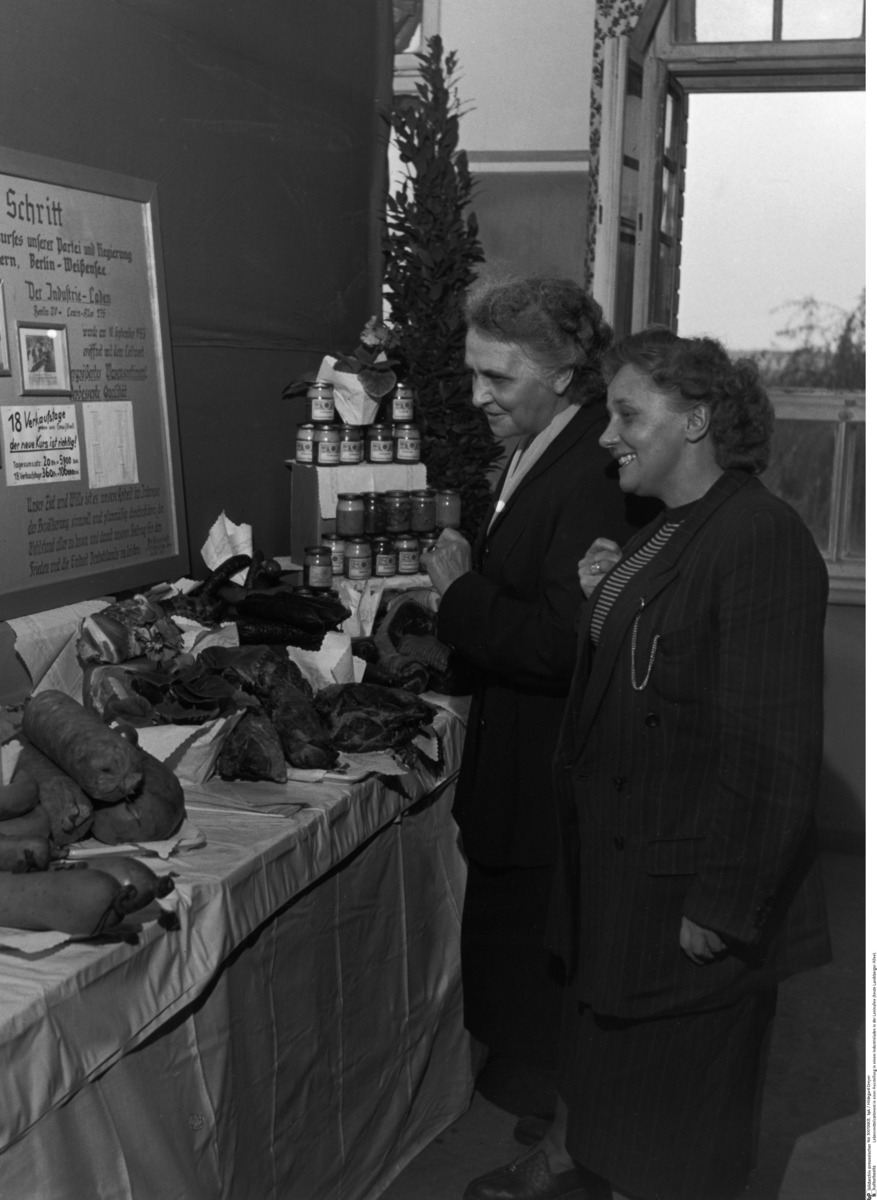Source

Source: Food assortment in an exhibition in an industrial store in
Leninallee (today Landsberger Allee). The exhibits were intended to
prove the correctness of the SED leadership’s “New Economic Course” to
increase consumer goods production after the June 17 uprising. Photo:
Hildegard Dreyer.
bpk-Bildagentur, image number 30019803. For
rights inquiries, please contact Art Resource at requests@artres.com
(North America) or bpk-Bildagentur at kontakt@bpk-bildagentur.de (for
all other countries).